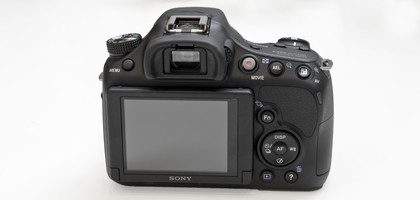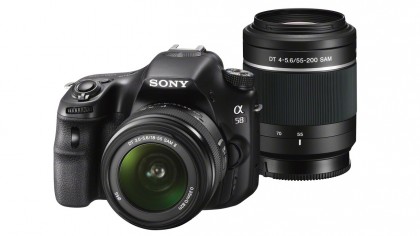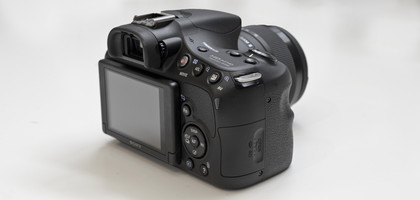Why you can trust TechRadar
Sony has been producing high performing cameras for some time, so we had reasonably high expectations for the Alpha a58. Image quality from both last year's Sony a37 and Sony a57 were good, so we guessed it would be a similar story with their replacement.
Happily, we can say that images contain plenty of fine detail, display good colours without being over the top and are generally well exposed.
JPEG images straight from the camera are pleasing, although in some circumstances, the camera has a tendency to produce slightly underexposed images, especially where the scene is quite dark. You might find yourself regularly having to dial in exposure compensation to combat this particular problem.

Bright colours, such as reds and oranges, are displayed well. The Sony a58 also represents other general scenes with more muted colours well, but perhaps with slightly less punch than the colours straight from its Canon and Nikon counterparts.
General purpose metering, known as Multi-segment metering on Sony cameras, does a good job in the majority of conditions, helping to produce balanced exposures. However, in high contrast situations it can struggle a little, and you'll need to switch either to centre weighted or spot metering, depending on the situation you're in.
Similarly, automatic white balance performs well in the majority of conditions, erring towards slightly warmer colours under artificial lighting, but switching to a more appropriate white balance setting is easy enough if you're finding it a problem.

The Sony a58 is packaged with an 18-55mm kit lens as standard, which is a new version of the old kit lens. It's a good performer overall, and is certainly worth investing in as part of the kit, if you don't already have some compatible optics.
By shooting at mid-range apertures such as f/8 we can assess the edge to edge sharpness of images. The whole frame displays a good level of clarity, though there is some softness evident in the very corners.
Autofocusing speeds, though much quicker than what the equivalent Nikon and Canon cameras can achieve while shooting in Live View (which DSLT cameras are basically always shooting in), are slow when compared to traditional DSLR focusing speeds, and certainly slow when compared with some of the current crop of compact system cameras (CSCs).

Sometimes the lens can hunt around to attain focus for several seconds, and when you're using the kit lens this can be a fairly noisy process, so if you're shooting somewhere quiet this can be a little distracting. This problem is made worse when the lighting levels drop slightly, or if you're attempting to photograph something relatively close to the lens, such as a portrait.
One plus point about the autofocusing system is the Eye-Start AF, which can be activated from the main menu. This automatically starts the autofocusing process as soon as the camera is lifted to the EVF, and can speed things up. It's perhaps most useful when using automatic AF
Sony was extremely keen to shout about its low light performance, in terms of image quality, at the launch of the Alpha a58. At very high sensitivities, such as ISO 2500 and ISO 3200, the Sony a58 does put in an impressive performance, with an impressive amount of detail kept and noise well controlled.

There's some evidence of smudging if you zoom in to 100%, but at normal printing and web sizes images are more than useable.
There are a wide number of digital filters available on the Sony a58, and it's worth experimenting with them. We particularly liked Toy Camera and High Contrast Monochrome. Because you can't use filters with raw format shooting, you might find that using Creative Styles gives you more flexibility.
With Creative Styles you can shoot with different settings selected, including Monochrome and Vivid, which you can customise, such as by upping the contrast. We particularly enjoyed using the Monochrome setting, but it's a shame you can't use different toning, such as cyanotype and sepia, as is offered by other manufacturers.

The Sony a58's screen is fairly low resolution, at just 460,000 dots, but it doesn't suffer too badly from glare or reflections. The tilting element helps if the sun is particularly strong, enabling you to get a better view.
The most notable improvement to the camera perhaps comes in the shape of the EVF, which is now an OLED device. It's significantly brighter than the previous version and is very easy to use.
There's barely any time lag and it's almost good enough to make you forget you're using an electronic viewfinder at times. You might find, however, when it's very sunny you need to guard the EVF with your hand to get a better view.
Amy has been writing about cameras, photography and associated tech since 2009. Amy was once part of the photography testing team for Future Publishing working across TechRadar, Digital Camera, PhotoPlus, N Photo and Photography Week. For her photography, she has won awards and has been exhibited. She often partakes in unusual projects - including one intense year where she used a different camera every single day. Amy is currently the Features Editor at Amateur Photographer magazine, and in her increasingly little spare time works across a number of high-profile publications including Wired, Stuff, Digital Camera World, Expert Reviews, and just a little off-tangent, PetsRadar.

